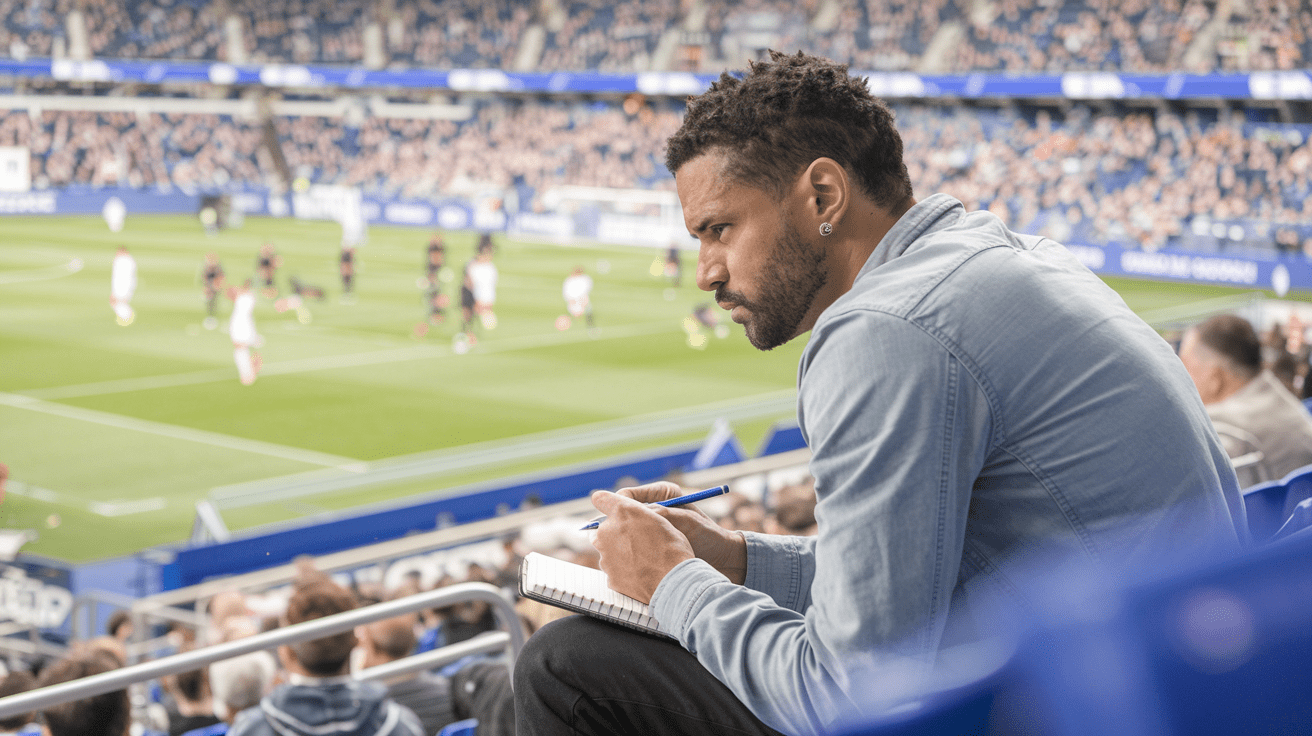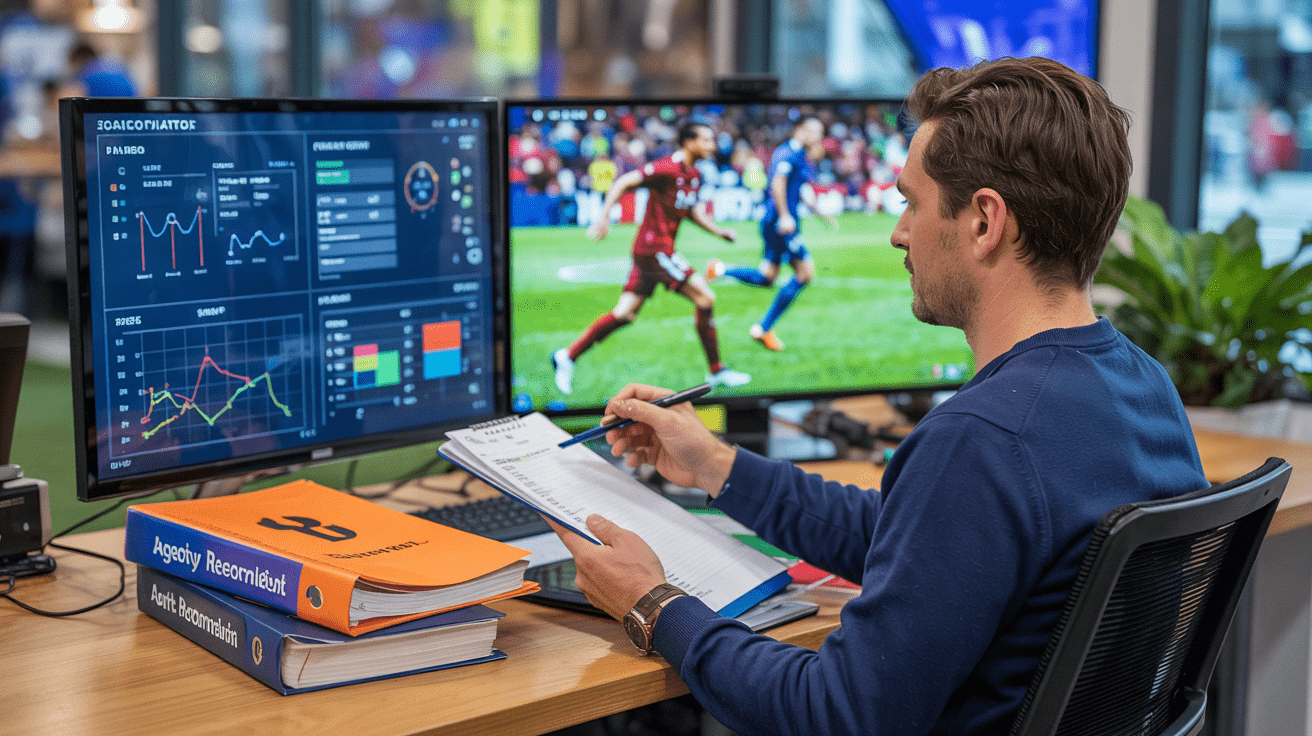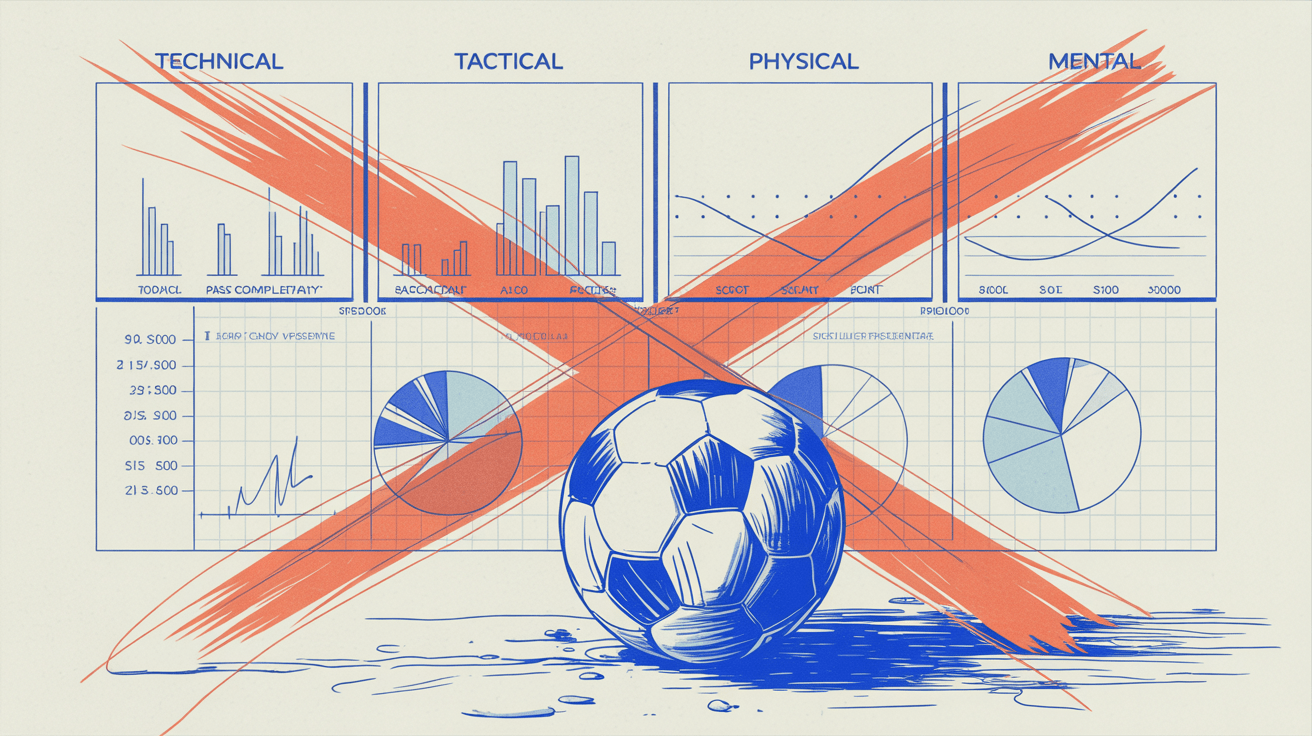As a scout, you constantly evaluate players. You can be more effective if you use several ‘lenses’ to watch football through. One of those lenses is a simple and understandable framework that improves your understanding of match situations. It significantly helps to identify strengths and weaknesses of players very accurately. In this article, you will learn more about this framework.
Four phases of every football action
Once you see it, you can never unsee it: when a player performs a football action, they go through four stages.
- Collecting information
- Deciding what
- Deciding how
- Executing decisions
First, players collect information about their environment. Then, they decide which football action to perform. Next, they decide how to perform it. Finally, they execute those decisions.
Is it that simple? Yes and no.
Yes, because the more you look at football actions through this lens, the easier it gets to recognize those four phases.
And no, it’s very hard to know precisely which information a player collected and what a player decided, as we cannot look into his brain.
Football actions
Before describing those four stages, let’s talk about what a football action is first. A football action is an action performed by a player where he interacts with his environment.
Offensive examples of football actions are passing, deep running, shooting and crossing. Defensive examples of football actions are covering depth, tackling, marking and pressing.
Actions such as chipping and sliding are no football actions. They are just ways to perform a football action. Sliding, for example, can be used for tackling, but also for shooting or passing.
1: Collecting information
The first stage of every football action is collecting information. They do so by using their senses: mostly through seeing, and to a lesser extent by hearing, feeling and sometimes even smelling.
Gathering information with your eyes can be done by turning your head to check your surroundings, like Boris Lum from Hertha BSC is doing in this clip.
But collecting information by looking if not only about ‘checking your shoulder’, but most definitely about seeing what’s happening in front of you too, like Neymar does in the clip below before taking a free kick.
Here are some other examples of collecting information that don’t involve seeing.
- A central defender touching the striker when the opponent gets a cross in to know where he is.
- A midfielder listening to the verbal coaching of a teammate to know if he can turn with the ball.
- A left winger smelling that the right fullback is marking him closely when he receives the ball.
2: Deciding what
Based on the information players collect, they decide ‘what’ to do. This refers to which football action they perform in a certain moment of time.
Let’s clarify with an example.
In the situation above, the ball carrier has several options.
- Keep dribbling
- Shoot
- Pass
That’s what we refer to when we talk about the decision ‘what’ to do.
Note that ‘pass to teammate A’ is a different decision what then ‘pass to teammate B’. So in the simplified situation below, the ball carrier decides between two different what’s, even though they both involve a pass.

3: Deciding ‘how’
Once players know what to do, they must decide how to execute their football action.
Let’s look back at the same football situation as before, but play it one second further.
We can now see he’s going to pass the ball (decision what). His next decision is then how to do that. There are four factors that players can decide on when deciding to pass.
- Position: from which location do they pass?
- Moment: when do they release the pass?
- Direction: where do they pass towards?
- Speed: how much speed does the ball get?
You can read more about those four time-space characteristics in this article.
4: Executing decisions
Finally, the last phase is executing the decisions. The execution of a football action, such as a pass, can be described by the same four time-space characteristics.
- Position
- Moment
- Direction
- Speed
The closer the position, moment, direction and speed of the execution is to the decision ‘how’, the more accurate the football action is executed.
This is what we call technique in football. Players with a good technique are better able to execute football actions very precisely.
Obviously, the technique level of players depends on the football actions they perform. Some players have a good tackling technique but a bad crossing technique. Other players have a great shooting technique but a bad marking technique.
Using this framework as a scout
By recognizing and analyzing these four phases in every football action, you take way more information out of the situations you observe.
This means you are better able to assess the strengths, weaknesses, current level and potential level of a player, which is exactly what you strive for as a scout.



